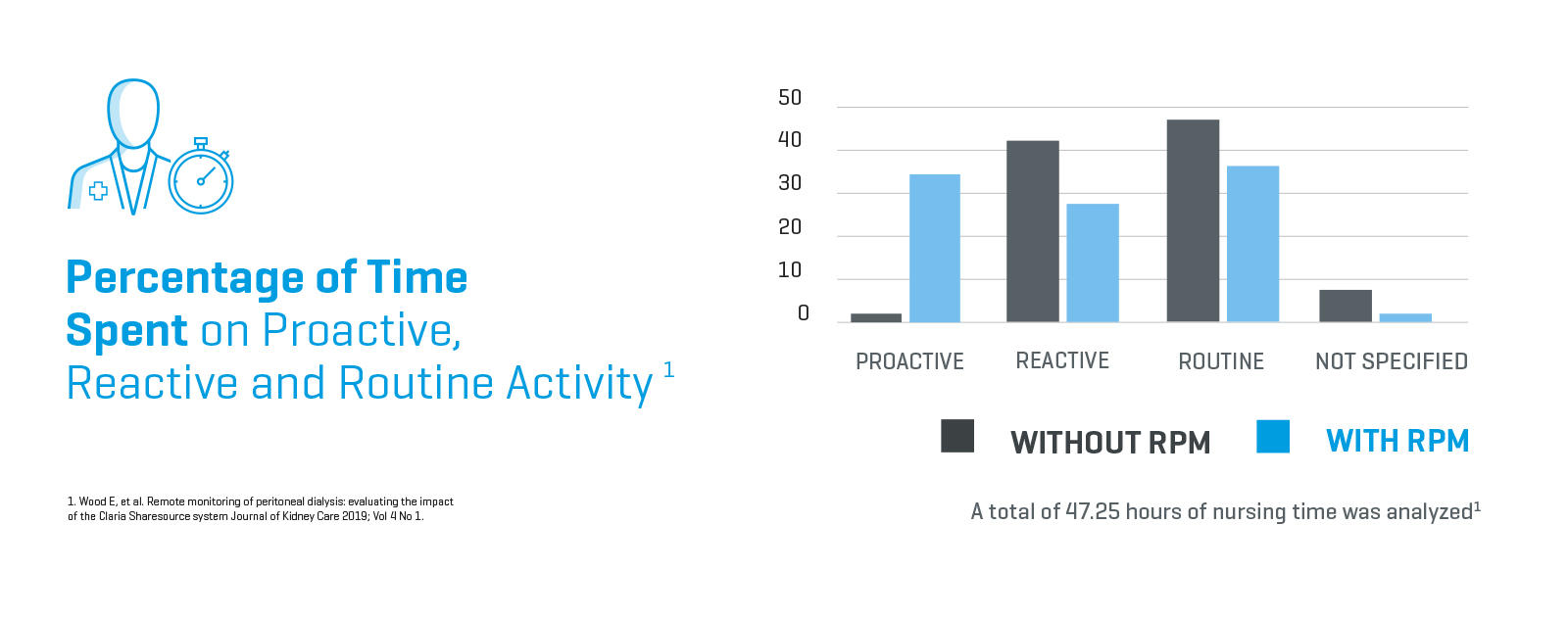Proactive Patient Management
Proactive Patient Management (PPM) allows for nurses and clinicians to care for and treat their patients with an anticipatory, preventative approach, rather than in a reactive or urgent manner.
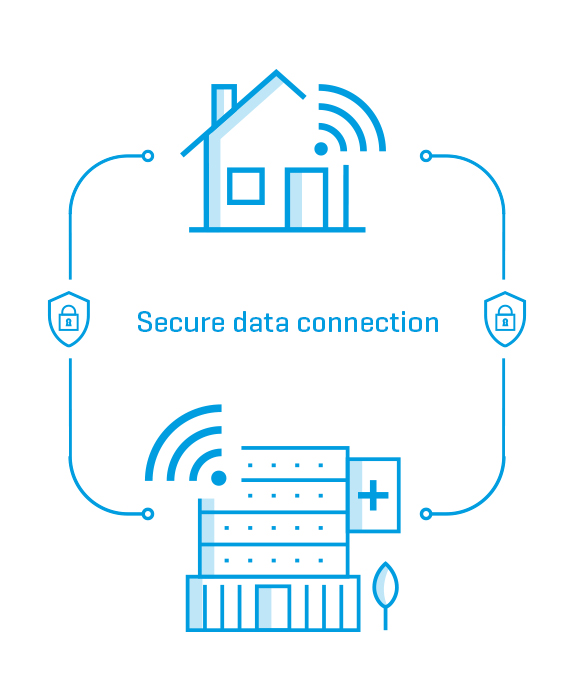
Abstract
RPM systems automate the sending of dialysis data to renal units and allow nurses and clinicians to adjust dialysis cycler programs remotely. To identify whether RPM helps improve patient management and clinic efficiency, 4 PD nurses were monitored in terms of the proportion of time they spent on proactive-, reactive-, and routine-care. Proactive patient care activities increased from 2% of nurses' time without RPM to 34% with the implementation of RPM.
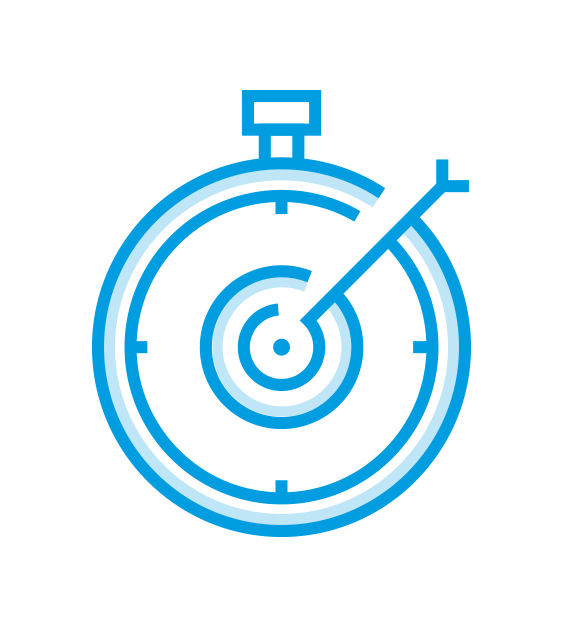
Rationale
New APD cyclers with two-way RPM technology allows nurses to view dialysis details remotely in a timely manner, proactively manage clinical issues and make program changes as necessary. It is important to evaluate the impact of RPM on nurses’ behavior and practice when caring for home-based APD patients and to identify whether RPM helps improve patient management and clinic efficiency.
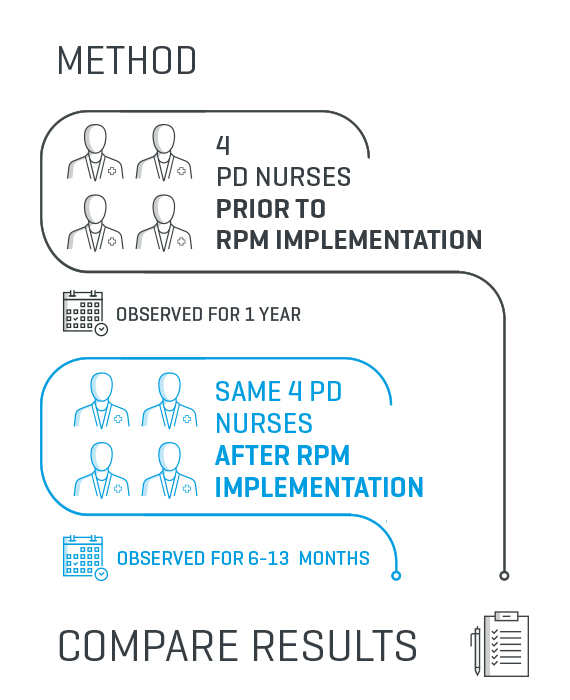
Method
Four PD nurses from 4 UK hospitals were observed prior to implementing APD with RPM (July 2015 – July 2016; before the introduction of APD with Remote Patient Management) and after implementing APD with RPM (September 2016 – March 2017; 6–13 months after APD with Remote Patient Management was established).
A tool was designed to log the time PD nurses spent on different types of task, specifically whether the task was:
- PROACTIVE - Anticipatory, preventative and change oriented (e.g. clinician discussions, phone calls/visits to patients and reviewing daily dialysis records)
- REACTIVE - Responsive (e.g. urgent patient consultations and assessments)
- ROUTINE - Regular planned activities (e.g. scheduled line changes and review consultations)
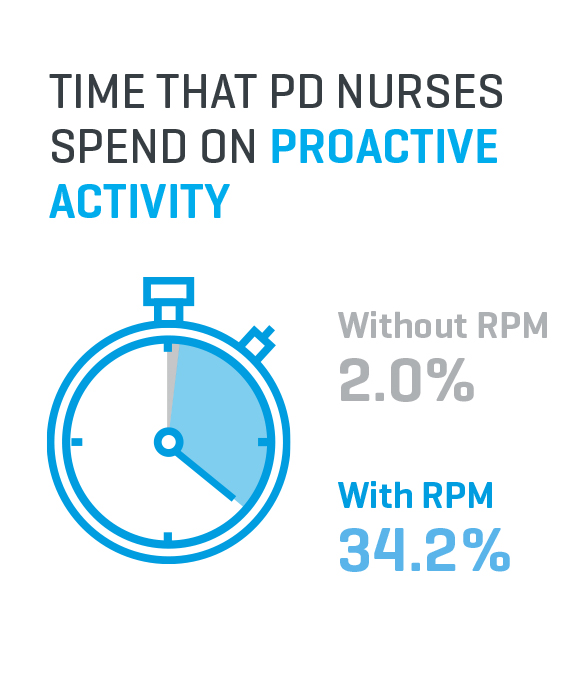
Findings
The amount of time that nurses were able to spend on proactive patient care activities increased from 2% without RPM to 34.2% with RPM. The time spent on reactive patient care decreased from 43.5% to 27% following the implementation of RPM while time spent on routine care decreased by 10%.1
RPM may be an effective method of increasing the time nurses and doctors spend on proactive care by reducing time spent on routine and reactive care.
